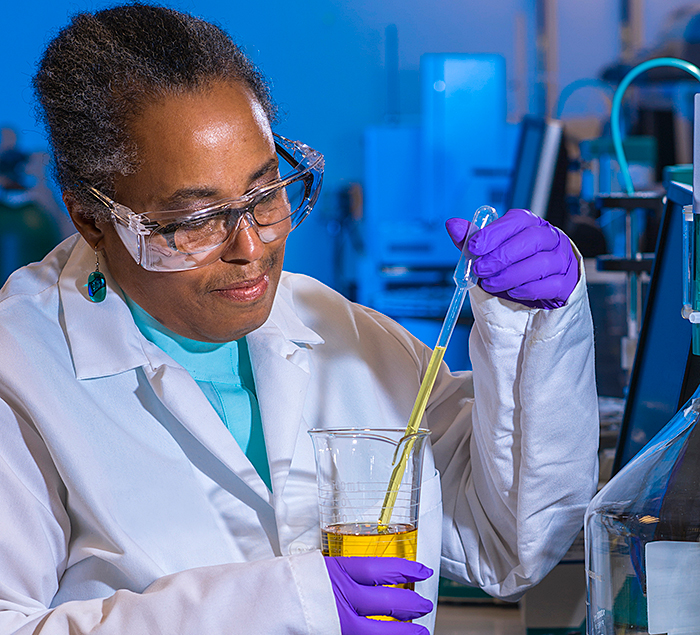Diverse products, common goals

Engineer Linda Thomas helps find ways to reduce the use of hazardous chemicals on Boeing aircraft. (Boeing photo)
Linda Thomas helps to ensure that the full range of Boeing’s defense and space products meet the environmental requirements of a diverse and complex mix of customers. It’s not a simple task.
“Boeing has contracts with nearly every branch of service in the U.S. Department of Defense, NASA and many international customers — hundreds of separate projects and programs. They are like snowflakes; no two are the same,” said Thomas, an engineer and Associate Technical Fellow who leads chemical risk management for Boeing’s defense and space customers.
Although each contract may have unique requirements and specifications, government customers have common environmental goals and expectations for their Boeing products, Thomas said. “Our customers look to us to ensure their aircraft can be operated in an environmentally responsible way anywhere in the world.”
Working with such varied and complex government contracts and criteria to continuously improve the environmental performance of Boeing products requires a different approach, Thomas said. For example, a chrome-free paint or primer developed for one program may not meet the specifications for a different product.
“We know that a single technology won’t meet the needs of every program. My goal is to provide the tools and technical expertise so each program can develop the best solutions,” she said. Tools include the Product Chemical Profile System, which helps identify and catalog the chemicals in Boeing products, a key first step in reducing the use of hazardous chemicals and materials.
Boeing has made substantial progress in developing chrome-free paints and primers, which are used on a variety of military products, including the AH-64 Apache helicopter; the V-22 Osprey tiltrotor aircraft; and the F-15E Strike Eagle, Chinook helicopter, F/A-18E/F Super Hornet and EA-18G Growler tactical aircraft. Environmentally responsible replacements also have been found for brominated flame retardants on all military product specifications.
Thomas said the key to continuing the progress is ensuring that hazardous material management is included in government contracts with Boeing from the start.
In addition to providing tools and expertise, Thomas encourages Boeing programs to collaborate closely with each other and with industry groups also concerned with reducing the use of hazardous chemicals. “I take part in global working groups and other events with the International Aerospace Environmental Group and other organizations. I update them on progress at Boeing and pass along other best practices to our military product community at Boeing.”
Thomas said even though her job is challenging at times, it’s also very satisfying. “I feel like I’m making a difference for future generations. The decisions I make today will affect people tomorrow,” she said. “When I see hazardous waste disposals and full landfills, I see the legacy of the past 50 years. I want the next 50 years to be different.”

